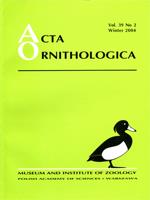The study was carried out in the outskirts of the town of Pecs (southern Hungary) in a recultivated former coal mine. Bordered by Turkey Oak forests, this open area forms a wedge-shaped clearing in that woodland. Since trees and taller shrubs are rare in the area, it is mainly ground nesting bird species that occur in the clearing. In order to discover whether it is more advantageous to nest in the recultivated area (clearing) than in the nearby forest or at its edges, 150 artificial ground nests were constructed. On 7 May 2002, one quail egg and a plasticine egg of similar size were placed in each of the artificial nests. After a week it was found that 24% of nests in the clearing, 30% of those in the forest edge, and 44% of the ones inside the forest had suffered depredation. The proportions of damaged plasticine and quail eggs inside the forest and at the forest edge were similar, whereas the quail eggs in the clearings were significantly less damaged than plasticine eggs. Of all the experimental eggs, significantly more plasticine eggs (29%) were damaged than quail eggs (17%), which suggests that small-bodied predators are unable to break the quail eggs. 18% of the plasticine eggs attacked, and 72% of the quail eggs attacked were removed from the nest by the predator. Among the predators, small mammals were dominant in the clearing and inside the forest, and birds at the forest edge. Based on the prédation of quail eggs, the survival chances of ground nests in the clearing are greater than at the forest edge or inside the forest.
How to translate text using browser tools
1 December 2004
Ground Nesting in Recultivated Forest Habitats — A Study with Artificial Nests
Jenő J. Purger,
Lídia A. Mészáros,
Dragica Purger

Acta Ornithologica
Vol. 39 • No. 2
December 2004
Vol. 39 • No. 2
December 2004
artificial ground nest
nest predation
plasticine egg
quail egg
recultivated area




